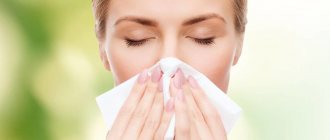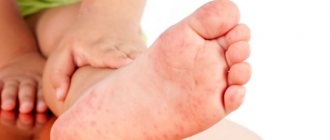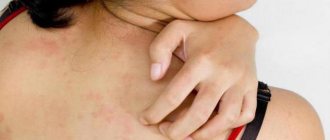09.07.2017
Many people wonder: is there an allergic reaction to mushrooms? This problem worries many representatives of the medical field today, because allergies to mushrooms are becoming more common today, and are even in second place after allergies to dust mites. Almost every person can detect negative reactions in their body to some mushrooms.
But how can you eliminate this product from your life, if it not only brings many benefits, but is also found in many foods and substances, for example, in the same yeast bread that we eat every day. What to do if you still have increased sensitivity of the body to mushrooms? And how dangerous is it? We will look at all the nuances of this common problem in this article.
Causes
Can you be allergic to mushrooms? This product can cause acute reactions in the body. Every fungus has spores and mycelia that can become pathogens. Typically, a negative reaction to the penetration of spores into the body occurs with a hereditary tendency to allergies. It is these cases that are more severe.
Do healthy people have allergies to mushrooms? This happens sometimes. Fungi that cause allergies can be of 2 types:
- Products: edible mushrooms, yeast.
- Microscopic organisms are molds that develop in a certain environment (in damp places, bread, spoiled food).
An allergy appears in the case of:
- contact of spores with the skin or lungs;
- ingestion with food;
- fungal infection causing hypersensitivity.
Some people are sensitive to infectious agents that affect pets. Often, allergies to mushrooms appear in people who are forced to come into contact with these microorganisms during their work. This applies to librarians, pharmacists, bakers, brewers, and miners. Allergies also occur in people who spend a lot of time in enclosed spaces with high humidity, greenhouses and old houses.
How can medicine help?
In the treatment of allergies to mushrooms, it is important to establish proper nutrition for the patient - it is necessary to limit the consumption of foods that are known to contain mold fungi. These include fermented milk products, sharp and blue cheeses, beer, kvass, champagne and wine, yeast dough, smoked meats, and sauerkraut.
When a disease provoked by fungi occurs, it is the clinical form of the pathological process whose symptoms are detected in the patient that is treated - bronchial asthma, allergic rhinitis, deep mycoses, and treatment should be prescribed by an allergist or mycologist. If it is possible to isolate the type of fungus, specific immunotherapy can be used over a long period of time.
What mushrooms rarely cause allergies?
Allergies usually occur to certain families. But there are species that rarely cause this reaction. This applies to:
- champignons;
- honey mushrooms;
- oily;
- oyster mushroom
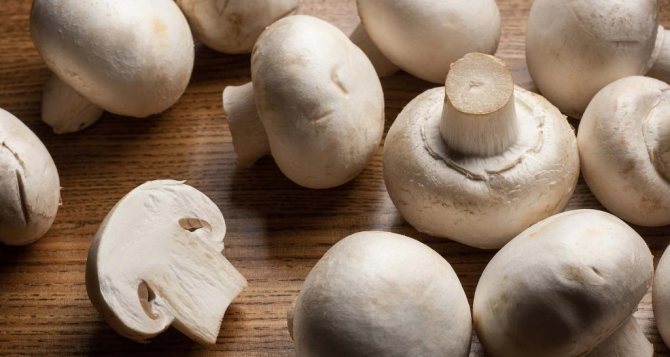
These species are not able to absorb chemical compounds that cause intoxication in humans. But even to them sometimes allergies appear. This is considered a sign of a complex disorder that manifests itself through ingestion, contact with spores or mycelium.
Allergens
There are mushrooms that cause allergies. It refers to:
- milk mushrooms;
- boletus;
- boletus;
- white;
- boletus boletuses
An allergic reaction to chanterelles and saffron milk caps often occurs. Digestion of mushroom fiber occurs slowly. When in the stomach, it leads to the progression of allergies. An unpleasant phenomenon occurs in children and people with diseases of the gastrointestinal tract and enzyme system.
Digestion of champignons is easy. They are not able to overload the digestive system. Champignons are often used in cooking, as they rarely provoke allergies. In addition to them, boletus and honey mushrooms are often used in cooking.
If you are sensitive to milk fungus, doctors recommend eliminating dairy and fermented milk products. They contain a lot of yeast, which leads to unpleasant symptoms.
In case of weakened immunity, kombucha also poses a danger. During tea fermentation, mold appears in the drink. It can cause significant harm to health and lead to an allergic reaction. If mushrooms cause allergies, you should not ignore it, you should consult a doctor.
What does fungus look like on the face?
Medical science distinguishes several types of mycosis; in the photographs of patients, the difference between sizes, shapes and contours is visible:
- Trichophytosis - expressed in the form of large round spots. The edges of the wound look like inflamed ridges. In the infected area, scaly nodules are visible, which without treatment turn into ulcers. Changes in weather provoke illness.

- Ringworm multicolored - appears as small pink spots. If left untreated, the spots unite and change color to brown.

- Seborrheic dermatitis - originates from the scalp. At the initial stage, small inflamed areas form. They are covered with scales or hemorrhagic crusts. Burning itching is characteristic; scratching the wounds leads to secondary infection.

- Rubromycosis is characterized by dilation of blood capillaries. At the last stage, crusts form.
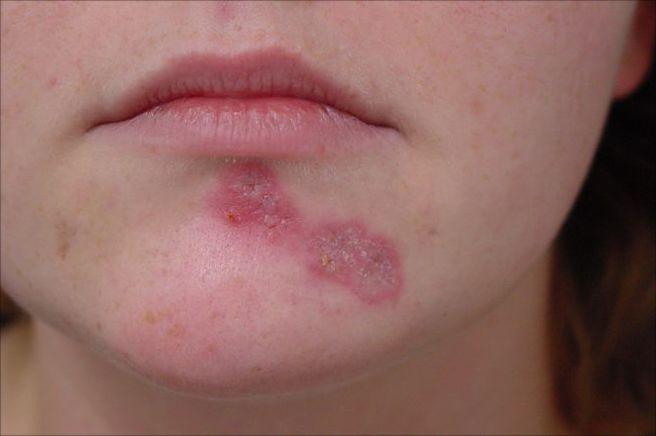
- Microsporia - infection occurs from sick animals or contaminated soil. The infected part peels off, eventually becoming covered with crusts and ulcers.
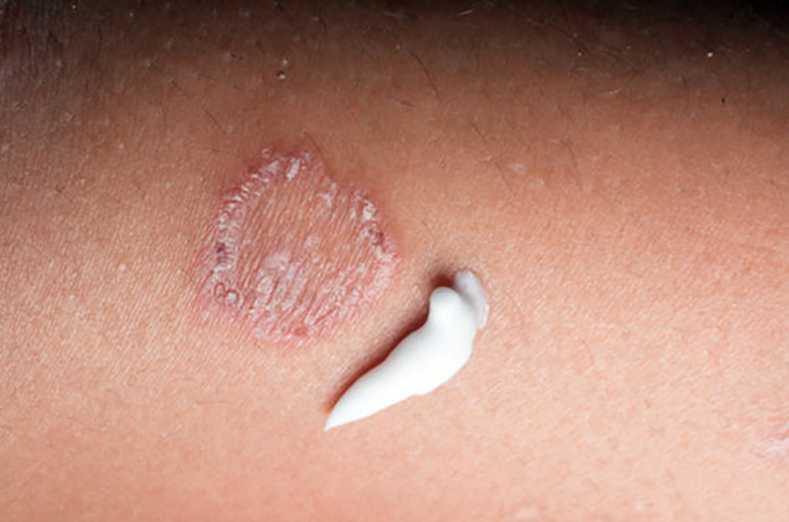
In men, mycosis most often finds refuge in the mustache and beard area. The so-called parasitic sycosis. The hair follicles become inflamed, blockage and suppuration occur.
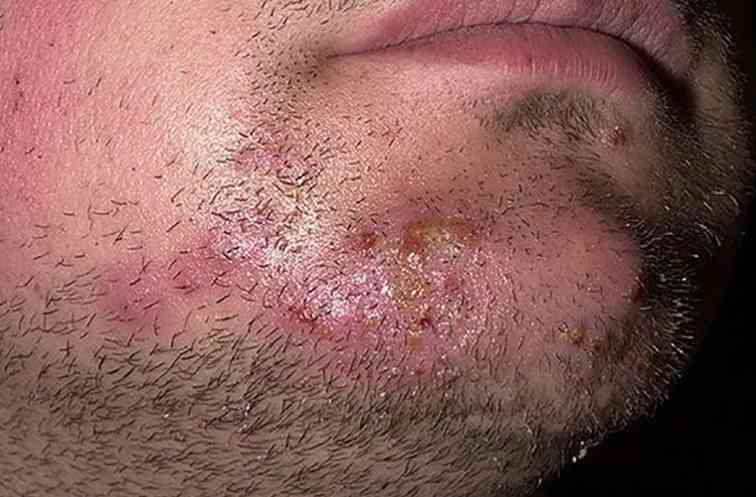
Who should not eat mushrooms?
The product is prohibited for baby food. Since children's digestive organs are underdeveloped, they are not able to digest these products without complications.

It is not advisable to eat this product for those suffering from gastritis, kidney and liver diseases. The components present in the mushrooms lead to intensive production of bile and gastric juice.
Pregnant women should not use the product. It is difficult to digest and can lead to spasms of the stomach and intestines, including uterine contractions. This can cause miscarriage and bleeding.
Symptoms
Mushroom allergies are often considered an indicator of overall health. Typically, this diagnosis is made if there is a tendency to other allergic reactions, for example to dust mites, pollen, and foods.
The symptoms of a mushroom allergy are the same as those of a food or respiratory disorder. But they have a greater degree of manifestation due to the prevalence of this species and the impossibility of eliminating contact with them.

An allergy to mushrooms manifests itself in the form of:
- bronchial asthma;
- atopic dermatitis;
- low-grade or febrile temperature;
- diarrhea;
- nausea or vomiting;
- paroxysmal pain in the stomach;
- skin redness;
- swelling of the mucous membranes;
- swelling of the respiratory tract;
- swelling of the limbs;
- tachycardia;
- arrhythmias;
- a sharp decrease in blood pressure;
- increased secretion of mucus from the nose;
- increased tear production;
- headaches;
- dizziness, loss of consciousness;
- sore throat.
Allergies to fungal spores are often discovered late, as this phenomenon is confused with food poisoning. This leads to a deterioration in the body’s reaction, and when subsequent spores enter the body, the immune system reacts negatively. Therefore, severe symptoms are possible with this allergy.
The causative agent of fungal allergies in the external environment

The omnivorous nature of mushrooms is amazing. The Mir station, abandoned for a time by a team of cosmonauts, had to be flooded because all its equipment was corroded by mold fungi.
Under the sarcophagus of the Chernobyl nuclear power plant, despite the radiation, completely viable spores of microorganisms were discovered. These invisible aggressors destroy buildings, furniture, books.
Have you noticed how, when visiting a local landmark - a church, a castle, an old house or even a new building with leaks and moldy walls, many “sensitive” people experience a runny nose, cough, itching and other allergy symptoms?
Warmth and humidity are the main conditions for the prosperity of the mushroom world, with hundreds of species of which humans come into contact. And for a weakened body, allergies are often inevitable.
Several years ago, the medical community was shocked by sensational news: in a hospital department where particularly strict sterility rules were observed, inpatients still became infected.
And when we figured out the reasons, it turned out that the air conditioner was filled with mushroom invaders. There are no clear standards for the content of mushrooms in the air. Biologists from Moscow State University undertook to control the concentration of their spores, but, alas, such a public service has not been created.
Meanwhile, it is known that the saturation of the air with mushrooms is 1000 times higher than their relatives in allergenicity - pollen during the flowering period.
Most fungi are saprophytes (from the Greek words “rotten” and “plant”), which use waste products of other organisms or decaying plant and animal tissues for their growth.
In autumn and winter, herbivorous scavengers - storage fungi - work, causing rotting of stored grains, fruits and vegetables. It is not without reason that spring and autumn work in the garden, where there are a lot of rotten leaves, is associated with the manifestation of fungal allergies.
Yeast-like fungi, within several hours of staying inside the human body, cause symptoms of allergic rhinitis and disrupt the normal functioning of the stomach.
Penicillium fungus can often be found on items stored in basements or as green moldy spots on fabric. Poisonous spores absorbed during respiration penetrate into the human body, sprouting the finest threads called mycelium.
Diagnostics
A doctor can determine the cause of an allergy to mushrooms in a child and an adult after conducting a comprehensive examination and taking an anamnesis. Before this, there can only be assumptions about what product the negative reaction occurred to. Therefore, when you notice the first symptoms of a disorder, you need to go to an allergist. This especially applies to people who suspect that this particular product has become an allergen.
The allergen is determined by several methods:
- The blood is checked for immunoglobulin E and specific antibodies.
- Allergies are provoked by a food supplement (performed after the attack has stopped, 2 weeks after stopping medications and following a strict diet).
- Conduct skin tests for common allergens.
Based on tests and medical history of the patient and his family, the doctor determines which components he is allergic to. Usually, in addition to mushrooms, it also appears from other products: dust, wool, animal skin cells, plant pollen.
Signs of fungus on the face
How the fungus will manifest itself is a purely individual question. Much depends on the type of fungal pathogen and the state of the patient’s immune system. But in general, the clinical picture is similar for all types of the disease. External manifestations bring a lot of inconvenience to the patient.

It is very difficult to hide foci of the disease from others. Cosmetics on top of the fungus will not only not solve the problem, but will also make it worse.
Often, facial fungus can be confused with an allergy. With a sudden change in weather, from warm to cold and windy, exposed areas of the face may react with redness, dryness and peeling.
Agree, similar symptoms occur when you are allergic to a specific food product.
General signs of fungus for all types at the initial stage of the disease:
- Bright purple spots.
- Microcracks and ulcers on the face.
- The appearance of inflammatory processes on the skin of the face.
- Persistent itching and burning.
- Peeling of the skin.
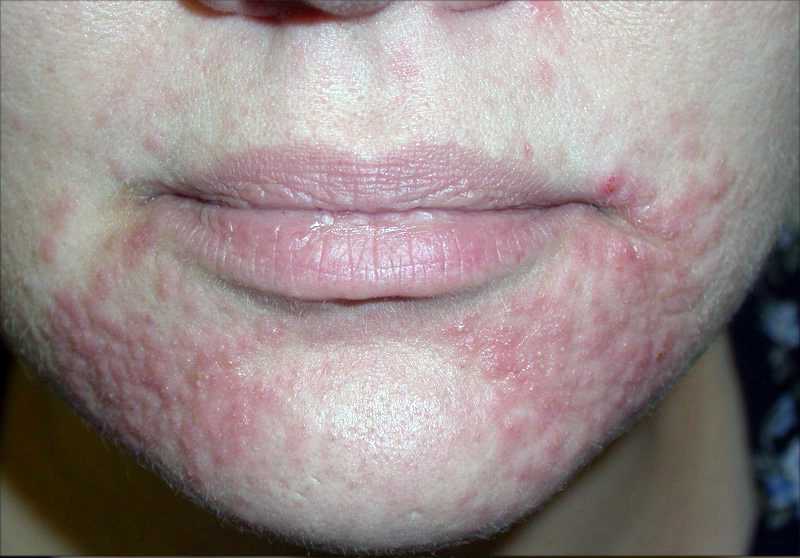
There are three stages of development of yeast fungus on the face:
- The first stage: the skin of the face changes color, local areas affected by the fungus become rough and peel.
- Second stage: the skin is very itchy and the site of infection takes on a clearly defined shape with a characteristic pink color.
- Third stage: the epidermis becomes covered with cracks, fistulas and ulcers. In advanced cases, skin peeling occurs. In this case, there is a high risk of damage to internal organs by fungal spores.
Important! But the symptoms of infection with an atypical type of fungus, on the contrary, are not pronounced. Only a red itchy spot appears and nothing else.
Fungus on the face of a child is manifested by excessive dryness of the skin.
Infants experience specific discharge and ulcers, the affected area becomes grayish in color.
Features of treatment
If an allergy is caused by mushrooms, it is treated by relieving the symptoms. But first, the product is eliminated from the esophagus. The patient is then prescribed medications that suppress the hormone that triggers the allergy.
When there are many pathogenic components in the blood, and the body itself is not able to eliminate them, blood cleansing is prescribed. When allergens and antibodies are eliminated, symptoms disappear faster. And to stop an attack, you need less medication.
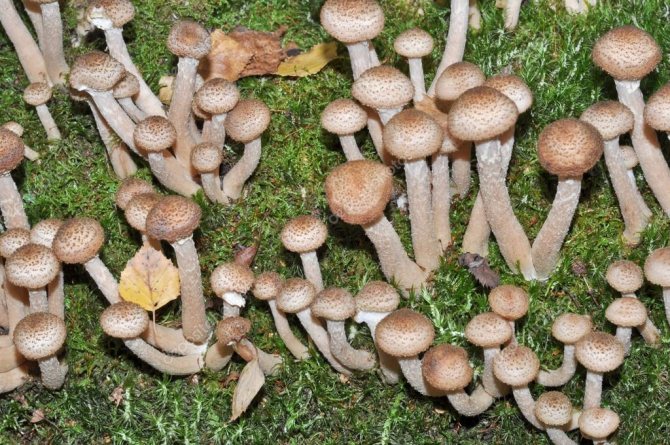
The doctor prescribes a strict diet that excludes from the diet foods that can lead to food allergies. This helps prevent excessive stimulation of the mucous membranes and immune system. In addition to oral medications, injections are sometimes used to make the results of treatment appear faster. They are administered only for severe allergy symptoms to prevent adverse reactions from histamine suppression.
When antihistamines do not work, serious treatment is needed. In these cases, the doctor prescribes a course of hormonal therapy to relieve symptoms. Usually the latter are manifested by swelling of the respiratory tract, vomiting, and cardiac dysfunction. To eliminate skin manifestations, creams with antihistamine components are used. Their main function is to eliminate itching and redness by restoring capillary circulation and reducing stimulation of nerve endings.
Diagnosis and treatment of fungal allergies
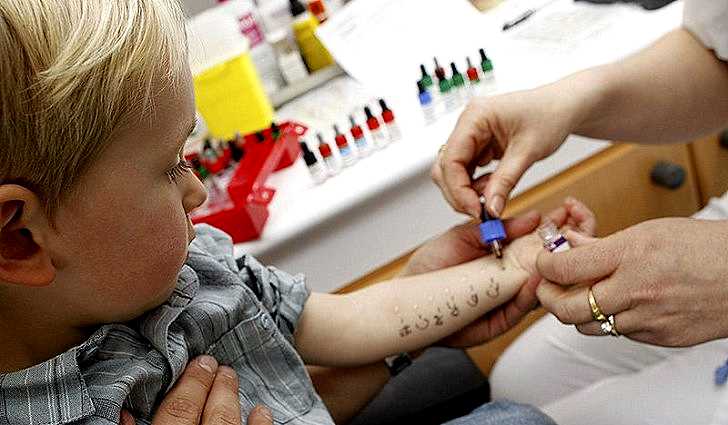
To clarify the diagnosis, you should contact an allergist and undergo skin tests. The allergen is applied using an application and drops, injected internally by scratching the skin or giving an injection. If the reaction is positive, a blister, inflammation or redness appears at the test site.
Other blood test methods allow you to assess the nature and degree of development of the inflammatory reaction. And the latest innovation is molecular diagnostics. Thanks to this research breakthrough, it has become possible to identify even individual proteins contained in an allergen.
As a result of this clarification, it is now possible to take into account the individual characteristics of the patient’s body.
The primary basis of treatment is avoiding contact with the allergen. And here it plays an invaluable role. ASIT - allergen-specific immunotherapy - is the only way to destroy the cause of the disease.
The allergen extract with a minimal and then gradually increasing dose is administered to the patient in the form of a subcutaneous injection. In this way, a loyal attitude of the immune system towards a “suspicious” stranger that is not accepted by the body is trained. But developing a new habit of tolerance takes several years.
Fungal allergens, as a rule, are agents of intoxication, so it is necessary to rid the body of poisoners. For emergency treatment of Quincke's edema and anaphylactic shock, drugs such as prednisolone, adrenaline, hydrocortisone, tavegil, dexamethasone, suprastin .
The most common means of “sewage disposal” for cleansing the body of fungal spores stuck in it are absorbers of harmful substances - sorbents, which remove them from the body, restoring the balance of microflora in the intestines.
activated carbon known since ancient times (if there is no stomach ulcer) - carbopect (4-8 capsules each), polyphepan (0.5-1 g / kg weight) and smecta ( neosmectin - 1 sachet), enterosgel (diluted in water 1:2 - 1 tablespoon each). The listed sorbents are taken 3-6 times a day.
Smecta helps restore mucous membranes after vomiting, protects and cleanses the gastrointestinal tract from harmful elements, and is effective against high fever and diarrhea associated with intestinal infections.
But smecta is incompatible with taking other medications, although it is so harmless that it is suitable for newborns. However, like coal, it should not be consumed for more than a week.
Enterosgel is a more powerful drug. By removing toxic particles, it restores the mucous membrane well and is harmless to microflora. The same applies to the use of polysorb , which strengthens the immune system and neutralizes toxins.
There are many ointments, creams and gels against skin lesions, such as flucinar, acriderm, triderma, advantan, elokom . For example, you can keep your feet in a half-hour hot infusion for 20 minutes every day: 5 tbsp. spoons of celandine, poured with 1 liter of boiling water.
Then the affected areas of the steamed legs are treated with an antifungal drug ( exoderil, lamisil ) or, say, celandine oil. It is prepared by washing down a liter container filled with chopped celandine with sunflower oil and kept for 2 weeks in a dark and warm place.
If symptoms are persistent, antihistamines and glucocorticosteroids are used. Antihistamines block the corresponding receptors in the body, reducing the release into the blood and tissues of biologically active substances responsible for the development of an allergic reaction.
The first generation of antihistamines ( suprastin, tavegil, peritol ) has side effects, causing drowsiness and lethargy, and with long-term use they are useless due to addiction.
The new generation of antihistamines - zodak ( zyrtec, cetrin, cetirizine ), levocetirizine ( xysal, suprastinex ), loratadine ( claritin ), desloratadine ( erius ), is free from these shortcomings
First aid
When the first symptoms of an allergy occur, antihistamine tablets are needed. If the signs disappear, then this is a mild form of pathology, which, however, does not exclude subsequent consultation with a doctor.
When symptoms are a threat to health, antihistamines can only delay the worsening of the situation. Therefore, you need to call an ambulance if the symptoms do not resemble mild poisoning. If they occur, this must be done quickly, because, in addition to disruptions in the functioning of the heart and lungs, some forest mushrooms are not suitable for food, and then, in addition to allergies, intoxication appears. In this case, before the ambulance arrives, it is necessary to induce vomiting and give the person a sorbent to stop the penetration of toxins into the blood.

Before doctors arrive, the patient’s condition must be monitored. If breathing is normal, he should be placed on his back. Legs should be elevated. When there are breathing problems, it is necessary to choose a position in which the compression of the airways will not be strong. In difficult cases, the patient needs to bend over and place his elbows on his knees.
There is no need to give other medications before the doctors arrive. Only antihistamines and sorbents help. Medicines can react with or worsen allergies. It is necessary to prepare a list of medications that have recently been taken, as well as information about chronic ailments.
Allergy to champignons, mushrooms: causes, symptoms, treatment
With the arrival of autumn, a lot of people rush into the forest to pick mushrooms; in other seasons, many people also don’t mind treating themselves to delicious salads and other dishes made from champignons and oyster mushrooms. But not everyone knows that allergies to champignons, oyster mushrooms or wild mushrooms are a common reaction. It can develop in children and adults.
The response of the immune system to a product sometimes becomes a completely unexpected phenomenon, since many do not even ask the question: “could there be an allergy to mushrooms,” because they have so many benefits. It contains a huge amount of substances, vitamins and microelements, and the lecithin content is comparable to its presence in meat.
But with individual intolerance, even a tiny piece of fresh or canned mushroom in food can cause serious consequences.
Benefits of mushrooms
Mushroom dishes have firmly occupied their niche in the diet, because they contain a large amount of nutrients and proteins, and the calorie content is comparable to meat. They are widely used in cases where a person adheres to the principles of vegetarianism or fasts.
Microscopic fungi (fungi) are necessary in economic activities for fermentation processes. They are used to produce yeast dough, champagne, sparkling wines, fermented milk products, and sauerkraut.
A number of molds are used by humans to obtain medicines. The first antibiotics (penicillin) were obtained from mold.
Low allergenic species
Allergy to wild mushrooms or champignons is not the most common occurrence. All of them are considered products with a low allergen index. List of fungi, reactions to which are diagnosed in rare cases:
- white or boletus,
- champignons and oyster mushrooms,
- boletus and boletus,
- honey mushrooms and boletus,
- milk mushrooms,
- saffron milk caps and chanterelles.
Often, mushrooms provoke allergies due to the fact that the digestion of fiber in the stomach occurs slowly. This leads to a reaction in people with enzyme deficiencies, digestive diseases and in young children whose digestive system is in the process of formation.
Science also knows that some types of these organisms are the most powerful allergens for humans. The following fungi are allergens: molds that develop in damp rooms, on the damp soil of indoor plants.
Contraindications for use
Mushrooms are by no means a dietary food; there are a number of contraindications to their consumption:
- The dishes should not be introduced into the diet of children under five years of age. At this age, the digestive system is being formed; due to a lack of enzymes, the child’s body finds it difficult to cope with heavy foods.
- Not recommended for pregnant women and mothers breastfeeding.
- Prohibited or allowed in minimal quantities for people diagnosed with: gastritis, pancreatitis, cholelithiasis, kidney disease, liver failure, liver cirrhosis, ulcers of various etiologies.
Reasons for the negative reaction
Any mushroom, regardless of size, consists of several parts, which can cause a negative reaction in the human body. These are both mycelium and spores. Upon contact with the product, the reasons for the development of a negative reaction may be:
- An allergen (spores) that entered the human body through the nasal passages or through direct (tactile) contact with it.
- Foods that contain microscopic fungi (fungi) - yeast dough, drinks prepared using fermentation technology (kvass, wine, champagne), fermented milk products and sauerkraut, kombucha, blue cheese.
- Dishes containing a product in its composition if it is individually intolerant.
Characteristic manifestations
Symptoms of allergies to champignons and other mushrooms are divided into two types:
- Allergic reactions. Characteristic manifestations of food allergies or contact with spores are accompanied by rhinitis of the upper respiratory tract, severe runny nose, nasal congestion, sneezing and coughing. The mucous membranes of the nose, throat and eyes turn red, swelling and lacrimation may appear. A hives-like rash appears on the skin, accompanied by severe itching.
- Toxic reactions. The symptoms are similar to food poisoning. Nausea and vomiting appear, accompanied by a sharp increase in body temperature, dizziness, and pain in the head.
In severe cases that require immediate medical attention, anaphylactic shock develops with a sharp decrease in blood pressure, immediate swelling of the airways (Quincke's edema), and respiratory arrest.
Diagnostics
If the first symptoms of an allergy occur, you should immediately go to the doctor for further diagnosis of the disease. An allergist will perform the following activities:
- conduct a visual inspection;
- collect a detailed medical history;
- prescribe blood and urine tests;
- will send you for provocative tests or tests to identify a specific allergen.
Dishes with mushrooms are an infrequent guest in the human diet, but an allergy to mushrooms manifests itself quite clearly, therefore, it will not be difficult for a doctor to diagnose the disease.
Treatment
Treatment of the disease is divided into two stages. Medication includes:
- antihistamines that neutralize negative manifestations;
- adsorbents that remove allergen from the body;
- topical preparations to eliminate symptoms (ointments, gels, drops);
- hormonal therapy in difficult cases.
The next stage is the complete elimination of the causes that led to the development of allergic manifestations:
- complete refusal of mushroom dishes in the diet when the diagnosis is confirmed;
- compliance with hygiene rules when preparing;
- limiting the time spent in places where the product is grown and stored (forest in autumn, storage facilities, damp rooms).
Preventive measures
Preventive measures for collecting and preparing forest products include the following:
- Picking wild mushrooms is a responsible activity. You should not take specimens that are unfamiliar; collection sites should be located away from roads and industrial enterprises.
- The collected mushrooms should be carefully examined at home, and old and moldy ones should be thrown away.
- The gifts of the forest should be washed several times with running water, sand, soil, moss and leaves should be removed from them.
- Before cooking, you need to soak the mushrooms in water with added table salt for a couple of hours. The procedure will help get rid of worms and insects that have settled inside.
- After soaking, the product should be heat treated.
- Fresh specimens cannot be stored in the refrigerator for a long time; to do this, they should be frozen.
- It is dangerous to purchase mushrooms (fresh and canned) from strangers, on roadsides or in spontaneous markets. It is recommended to buy the product in large stores, but you need to pay close attention to their appearance and expiration date.
- Mushrooms can be consumed with caution if you are allergic to other foods. They should not be given to small children and women who are expecting a baby or women who are breastfeeding.
- It is worth significantly reducing mushroom dishes in the diet if diseases of the gastrointestinal tract are diagnosed and completely eliminating them when an allergic reaction occurs.
Source: https://allergiku.info/allergeny/pishhevye/allergiya-shampinony-griby/
Prevention
To prevent allergies, you need to exclude mushrooms from your diet. You should choose a diet that does not contain foods that lead to such a reaction. If an allergy manifests itself to different types of product, and not to certain ones, then exclusion from the diet is required:
- kvass;
- alcohol;
- mushrooms;
- yeast baking;
- fermented milk products;
- various fermentation products.
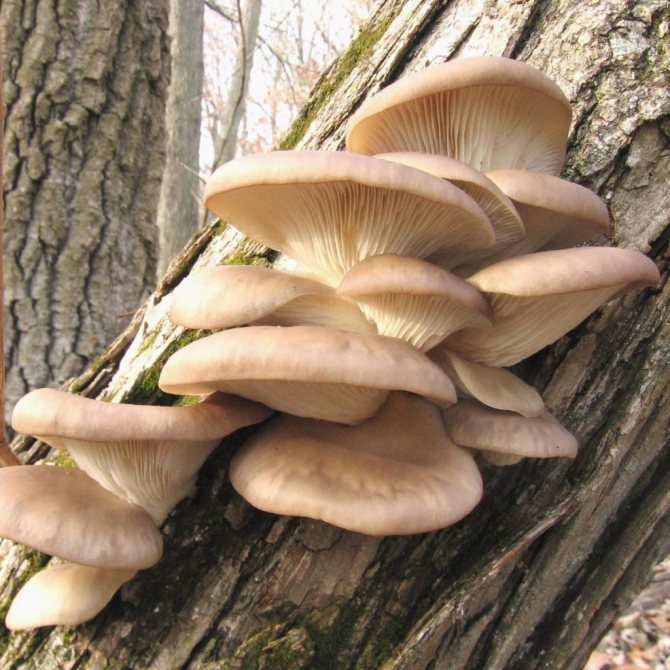
In addition, you cannot be:
- in damp, stuffy rooms;
- in basements, cellars, where there is poor ventilation;
- in old houses.
If a microorganism spreads in certain areas, then they must be constantly cleaned. This applies to the trash can, refrigerator, table, bathroom, area near the sink and stove. In addition to regular cleaning, treatment with drugs that destroy pathogens is necessary. This should also be done with shoes that are used in public places: swimming pools, offices.
Other preventive measures
Those suffering from this type of allergy will have to stop growing houseplants. If the allergy is not severe, you need to regularly treat the soil with antifungal agents.
You should pay attention to the air conditioner. It can spread dust and spores, which often leads to allergies, so it is advisable to choose devices that filter not only the incoming air, but also the air blown into the room. If there is no such device in the room, then the freshness of the air must be constantly monitored. Airing should be carried out at least 2 times a day.
Some fungi attack foliage and mown grass, so it is necessary to minimize contact with them. The same applies to plants, so you should not choose buildings for living where trees and open water are located nearby. Doctors advise not to plant garden plants that are vulnerable to pathogenic microorganisms. And if there is already a garden, then careful monitoring of its condition and regular therapeutic and preventive procedures are required.
